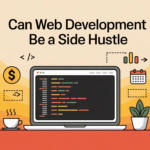
Artificial Intelligence (AI) is rapidly transforming industries across the globe, and digital art and design are no exceptions. Once limited to the realm of science fiction, AI’s ability to create, assist, and even inspire human creativity is now a tangible reality. This article explores how AI image generators, a groundbreaking subset of AI technology, are reshaping the landscape of digital art and design, making it more accessible, efficient, and versatile than ever before.
The Rise of AI Image Generators

AI image generators have come a long way since their inception. The journey began with rudimentary algorithms that could only produce basic patterns or replicate existing images. However, with the advent of Generative Adversarial Networks (GANs) and more recently, diffusion models, the field has experienced an exponential leap. GANs, which involve two neural networks pitted against each other, have allowed AI to generate images that are not only realistic but also imbued with creativity. Diffusion models have further refined this capability, enabling the creation of highly detailed and stylistically diverse images.
These advancements have paved the way for AI image generators that can produce original artworks, photorealistic images, and even abstract designs that push the boundaries of human imagination. What was once the domain of expert designers and artists is now within reach of anyone with access to these tools.
Benefits of AI Image Generators in Digital Art

AI image generators offer a multitude of benefits, making them indispensable in the digital art and design world. One of the most significant advantages is speed and efficiency. What might take a human artist hours, or even days, to conceptualize and create can be accomplished by AI in mere minutes. This rapid turnaround time is invaluable for industries where deadlines are tight and demand is high.
Moreover, AI expands the creative possibilities available to artists and designers. It allows them to experiment with styles, techniques, and concepts that may be beyond their usual scope. For instance, AI can generate thousands of variations of a single design, providing a vast array of options from which to choose. This ability to explore the “what ifs” of design without significant time or resource investment is a game-changer.
AI also democratizes the creative process by making advanced design tools accessible to non-artists. With user-friendly interfaces and the ability to generate professional-quality images, AI empowers individuals with little to no artistic training to produce impressive works. This opens up new opportunities for innovation and creativity across a broader spectrum of people.
Applications in Various Fields

The versatility of AI image generators is evident in their application across diverse industries. In graphic design and branding, AI tools can rapidly produce logos, marketing materials, and other visual assets that align with a brand’s identity. Fashion and textile design also benefit from AI’s ability to create intricate patterns and fabric designs, often combining traditional aesthetics with futuristic elements.
In the entertainment industry, concept artists leverage AI to generate quick prototypes of characters, environments, and scenes. This not only speeds up the pre-production phase but also allows for greater experimentation with visual styles. Similarly, in advertising and marketing, AI-generated images can be tailored to specific campaigns, enhancing the visual appeal of ads and ensuring they resonate with target audiences.
Challenges and Ethical Considerations

Despite its numerous advantages, the rise of AI in digital art and design is not without challenges. One of the most pressing issues is the question of originality and authorship. As AI-generated images become more sophisticated, distinguishing between human-created and AI-created art becomes increasingly difficult. This blurring of lines raises concerns about the value of human creativity and the role of artists in a world where machines can produce similar or even superior works.
There is also the potential for misuse, particularly in terms of copyright infringement. AI tools can inadvertently replicate existing works, leading to legal disputes over intellectual property. Furthermore, as AI becomes more integrated into creative processes, there is a risk that it could stifle originality, with artists and designers relying too heavily on AI-generated content instead of pushing their creative boundaries.
Balancing AI assistance with human creativity is crucial. While AI can be an incredible tool, it should complement, not replace, the unique insights and emotional depth that human artists bring to their work.
Case Studies and Success Stories

Several artists and designers have already embraced AI image generators, producing groundbreaking works that showcase the technology’s potential. For instance, renowned digital artist Mario Klingemann has used GANs to create thought-provoking pieces that explore the intersection of human and machine creativity. His work exemplifies how AI can be used not just as a tool, but as a collaborator in the creative process.
In the commercial realm, companies like Adobe and NVIDIA have developed AI-powered design tools that are now integral to workflows in industries ranging from fashion to film. These tools have been used to create everything from blockbuster movie visuals to cutting-edge fashion collections, demonstrating the vast potential of AI in professional settings.
The Future of AI in Digital Art and Design

Looking ahead, the role of AI in digital art and design is poised to grow even more significant. As AI technology continues to evolve, we can expect more seamless integration between AI tools and traditional design software. This will likely lead to new forms of collaboration, where human and machine work together to produce art that is greater than the sum of its parts.
Moreover, AI’s ability to learn and adapt means that future image generators will be even more attuned to the nuances of artistic styles, cultural contexts, and individual preferences. This could lead to a new era of personalized art and design, where AI tools create custom-tailored works that resonate on a deeply personal level.
FAQs:
1. What are AI image generators?
AI image generators are software tools that use artificial intelligence, particularly techniques like Generative Adversarial Networks (GANs) and diffusion models, to create images. These tools can generate original artworks, photorealistic images, abstract designs, and more, often based on user input or predefined styles.
2. How do AI image generators work?
AI image generators typically involve neural networks trained on large datasets of images. For example, GANs work by having two neural networks—one generating images and the other evaluating them—compete against each other. This process allows the AI to create increasingly realistic and creative images.
3. What are the benefits of using AI image generators in digital art and design?
AI image generators offer several benefits, including speed and efficiency, expanded creative possibilities, and accessibility for non-artists. They enable rapid prototyping, allow for the exploration of a wide range of styles and concepts, and make professional-quality design tools available to a broader audience.
4. In which industries are AI image generators commonly used?
AI image generators are used across various industries, including graphic design, fashion and textile design, entertainment (such as film and video game concept art), and advertising and marketing. They help streamline the creative process and produce high-quality visual content quickly.
5. Are there any ethical concerns associated with AI-generated art?
Yes, there are ethical concerns, including issues of originality and authorship, potential copyright infringement, and the risk of stifling human creativity. As AI-generated art becomes more prevalent, it is important to address these challenges and ensure that AI complements rather than replaces human creativity.
6. Can AI image generators replace human artists and designers?
While AI image generators are powerful tools, they are not likely to replace human artists and designers entirely. AI can assist with the creative process and provide new possibilities, but the unique insights, emotions, and cultural context that human creators bring to their work remain irreplaceable.
7. How are artists and designers currently using AI image generators?
Many artists and designers use AI image generators to experiment with new styles, create prototypes, and explore concepts quickly. Some, like digital artist Mario Klingemann, use AI as a collaborator, pushing the boundaries of what is possible in art and design.
8. What is the future of AI in digital art and design?
The future of AI in digital art and design looks promising, with AI likely to become more integrated into creative workflows. We can expect more personalized and adaptive AI tools, as well as new forms of collaboration between AI and human creators, leading to innovative and unique artworks.
9. Do I need to be a skilled artist to use AI image generators?
No, one of the key benefits of AI image generators is their accessibility. Many tools are designed to be user-friendly, allowing individuals with little to no artistic training to create impressive designs and artworks.
10. How can I get started with AI image generators?
To get started with AI image generators, you can explore popular tools like DALL-E, MidJourney, or Stable Diffusion. These platforms typically offer tutorials and user guides to help you understand how to create and manipulate images using AI. Many are accessible online and may even offer free versions or trials.
Conclusion
AI image generators are not just tools; they are catalysts for a new era in digital art and design. By enhancing efficiency, expanding creative possibilities, and making design more accessible, AI is revolutionizing the way we create and experience visual art. However, as with any technological advancement, it is essential to navigate the ethical challenges and ensure that AI serves to complement and elevate human creativity, rather than diminish it. As we continue to explore the potential of AI in art and design, one thing is clear: the future of creativity is here, and it is powered by AI.




